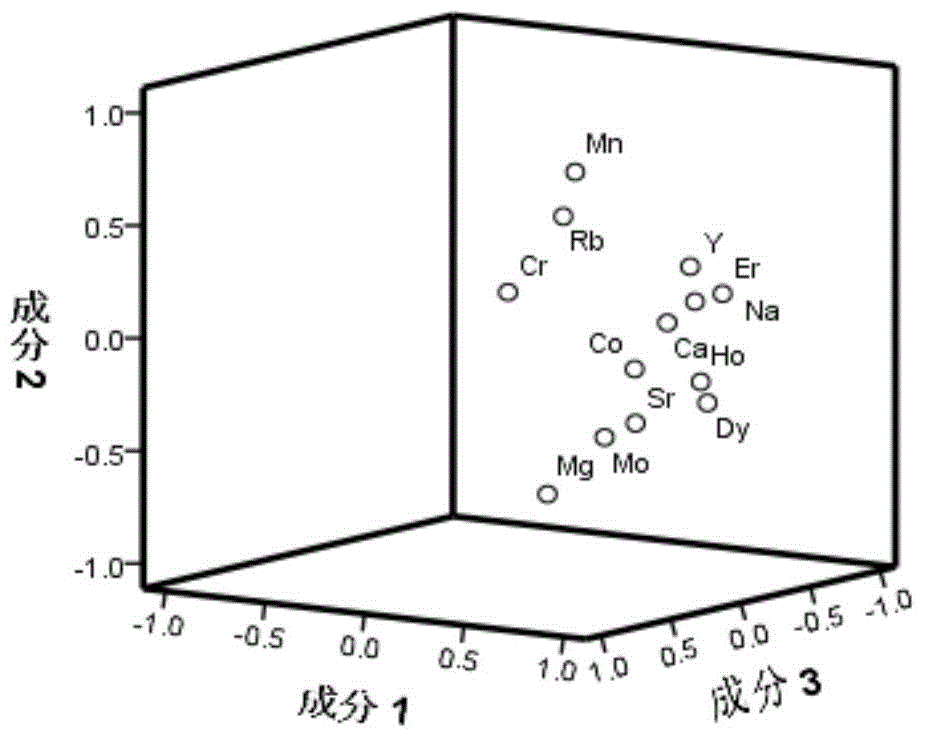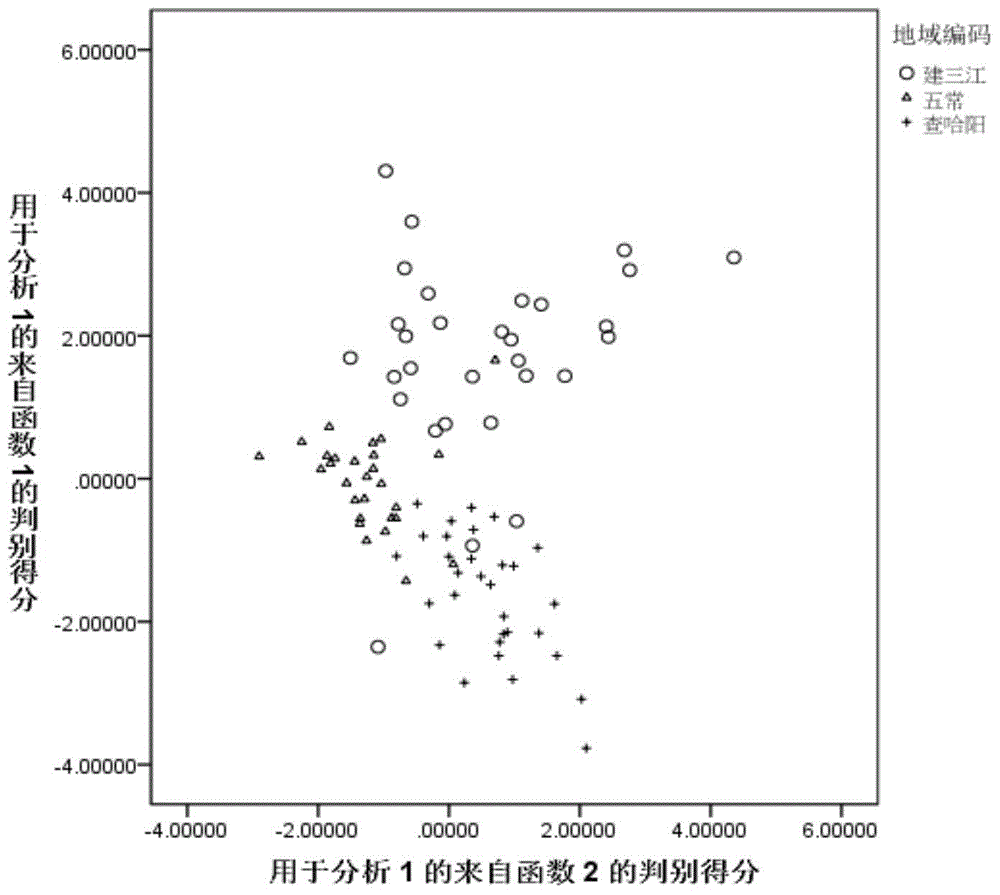Rice producing area identification method based on mineral matter analysis technology and application
An identification method and analysis technology, applied in the field of identification of rice origin, can solve problems such as indetermination
- Summary
- Abstract
- Description
- Claims
- Application Information
AI Technical Summary
Problems solved by technology
Method used
Image
Examples
Embodiment 1
[0034] The collection of embodiment 1 rice sample
[0035] The inventor collected rice samples in 2013 from Wuchang, Jiansanjiang and Chahayang. Each city selects the main producing county, and each county selects the main planting variety with the largest planting area in the main producing township (town). Collect about 5 kg of rice ears from the field during the harvest period, and number them. About 30 samples were collected in each city, and a total of 180 samples were collected. Considering the influence of different ecological conditions on the test results, sampling and recording the longitude and latitude of the planting site, sunshine hours, annual average temperature, rainfall, etc. The sample information collected in 2013 is shown in Table 1.
[0036] Table 1 Sample collection information table in 2013
[0037]
[0038]
Embodiment 2
[0039] The mensuration of embodiment 2 sample pretreatment and mineral content
[0040] The samples collected in Example 1 were air-dried, harvested grains, packed into nylon net bags and placed in a cool and ventilated place. The rice is then selected, hulled, hulled, and milled to obtain polished rice. All samples are processed in a unified manner. Rinse the polished rice quickly with deionized water to remove the surface of the polished rice and the foreign ions introduced during the processing, put it in an oven to dry, and perform ultrafine grinding.
[0041] Accurately weigh a sample of a certain quality, put it into a digestion tube, add a certain amount of acid, and put it into a microwave digestion apparatus for digestion. The sample solution obtained after digestion was washed out with deionized water, constant volume, and Na, Mg, Al, K, Ca, V, Cr, Mn, Fe, Co, Ni, Cu, Zn, As, Se, Rb, Sr, Y, Mo, Rh, Ag, Cd, Sb, Te, Ba, La, Ce, Pr, Nd, Sm, Eu, Gd, Tb, Dy, Ho, Er, Tm...
Embodiment 3
[0047] Example 3 Verification and Analysis of Elements Closely Related to Regions in Japonica Rice from Different Regions
[0048] 3.1 Principal component analysis of elements closely related to regions in Japonica rice from different regions
[0049] In order to preliminarily test the discriminative effect of 14 elements closely related to regions, Na, Mg, Ca, Cr, Mn, Co, Se, Rb, Sr, Y, Mo, Dy, Ho, and Er, on the origin of wheat samples from different regions The principal component analysis was performed on the contents of these 14 elements. The loading plot of the first 3 principal components is as follows figure 1 shown. Depend on figure 1 It can be seen that the main component 1 mainly synthesizes the information of the elements Na, Ca, Y, Er, Sr, Dy, Mo, and Co; the main component 2 mainly synthesizes the information of the elements Mn, Rh and Mg; the main component 3 mainly represents the element Ho information. The scores of the first three principal components of...
PUM
 Login to View More
Login to View More Abstract
Description
Claims
Application Information
 Login to View More
Login to View More - R&D
- Intellectual Property
- Life Sciences
- Materials
- Tech Scout
- Unparalleled Data Quality
- Higher Quality Content
- 60% Fewer Hallucinations
Browse by: Latest US Patents, China's latest patents, Technical Efficacy Thesaurus, Application Domain, Technology Topic, Popular Technical Reports.
© 2025 PatSnap. All rights reserved.Legal|Privacy policy|Modern Slavery Act Transparency Statement|Sitemap|About US| Contact US: help@patsnap.com



